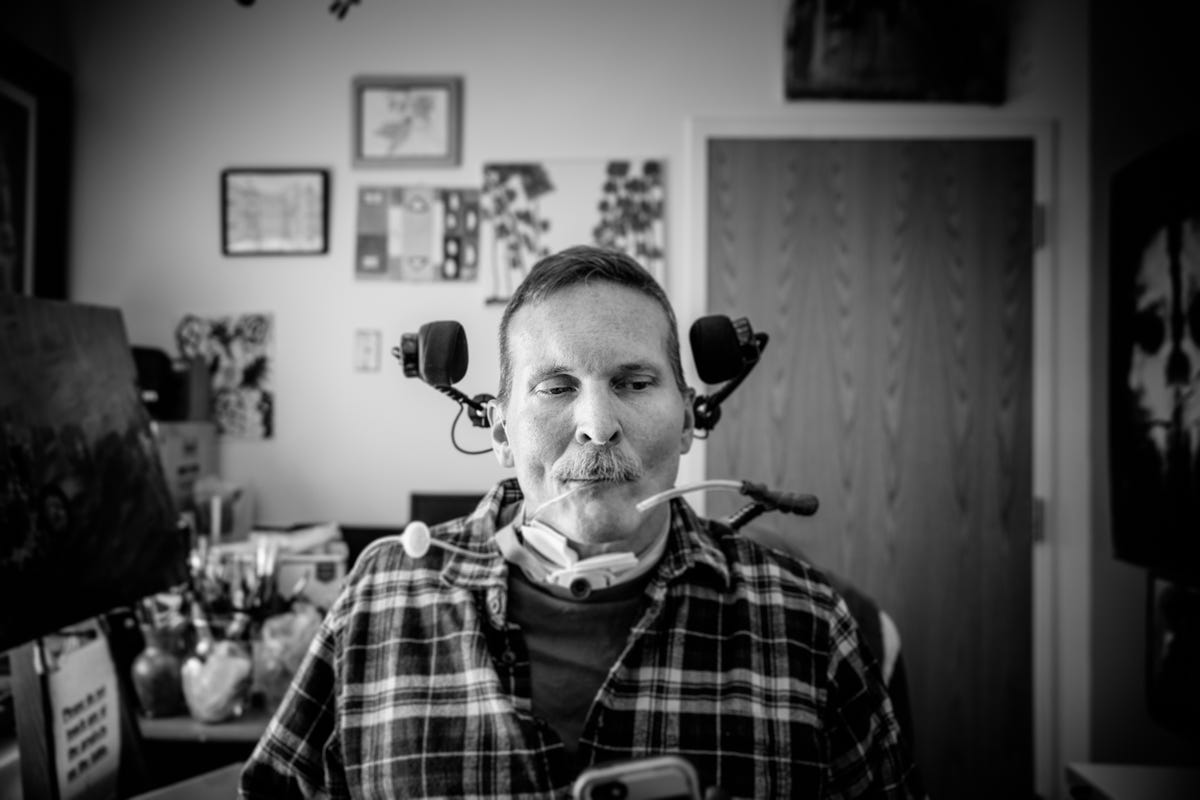How tech helps injured veterans gain independence
We tour one of the VA's technology labs and talk with veterans about how smart gadgets help make their lives easier.

Phil Swinford, a retired US Army colonel, is one of many veterans whose lives are being made easier by smart gadgets.
On July 18, 2015, he was involved in a mountain biking accident.
The accident resulted in an incomplete fracture of his C2 vertebrae and quadriplegic paralysis.
Swinford and his wife, Pam, have traveled to the McGuire VA Hospital in Richmond, Virginia, hoping technology can help improve their lives.
They're meeting with two VA employees who match eligible veterans and active duty service members with technology to improve their quality of life.
Melissa Oliver is the program director of the assistive technology program at McGuire.
Brian Burkhardt is a rehab engineer who works on her team.
Oliver, Burkhardt and the rest of the assistive technology department give patients demos of a wide variety of devices either at the VA or through video conferencing.
The Technology-Related Assistance for Individuals With Disabilities Act of 1988 defines an AT device as "any item, piece of equipment, or product system, whether acquired commercially off the shelf, modified, or customized, that is used to increase, maintain, or improve functional capabilities of individuals with disabilities."
Swinford is already an AT patient, but Burkhardt is going to fix some broken sensors on the back of his chair.
In addition to fixing the connections on the chair, Phil and Pam are getting a Control4 system installed in their home soon.
With Control4, Swinford will be able to control lights, open doors, and turn on the computer, television and more.
The Control4 system will also work with Amazon Alexa, for voice control integrations.
Veteran Earl Gentile and his wife, Julie, also work with the VA's AT department.
Gentile is very familiar with DIY smart home devices.
He has an Insteon Hub, a Nest Learning Thermostat, Amazon Alexa devices and an iPad in his home.
That means he can control the lights, thermostat and other devices remotely with voice control.
While Gentile's voice quality fluctuates, his cousin recorded a number of Alexa commands.
He simply selects and plays the audio file he wants to control things around his house.
When the AT program isn't able to find a specific device that works for a patient, Burkhardt and other employees will make it.
His office is full of custom 3D-printed and electrically modified creations.

